-
Posts
571 -
Joined
-
Last visited
-
Days Won
10
Content Type
Profiles
Forums
Gallery
Downloads
Blogs
Events
Store
Aircraft
Resources
Tutorials
Articles
Classifieds
Movies
Books
Community Map
Quizzes
Videos Directory
Posts posted by Mike Gearon
-
-
7 minutes ago, sfGnome said:
Apologies if this question has already been discussed in the past, but how much do people set aside for painting (both do it yourself or commercially done)? I’m not talking anything fancy; even plain white, no stripes. I noticed on a kit supplier’s page an estimate of USD20k for a plain job in a local car shop. Is that fair dinkum?
That’s crazy. I’ve taken a clue from one of the builders I’ve followed on this forum. We will build a temporary spray booth in the hangar complete with air flow and filters. I sprayed cars as a teenager. Hobby rebuilding them. It’s not that hard.
Good prep. Correct paint. Good steady even start to the pass, press trigger continue steady even run (distance from surface) with follow through after trigger released. Move down 50% and repeat. It ain’t rocket science.
-
Just a short note on sucking air. I’d read some 12 months ago about the problem and a Pipistrel did go down some years back and was found to have both tanks open and fuel remaining in 1 tank. The Australian importer had noted on the Pipistrel forum that in their tests they’d empty a tank and prop stop, turn empty tank off and crank start. I relied on windmill start. Twice. I also note the importer discussed how bad air in the lines is. Had about 5,000ft and 27:1 glide so not a large problem. To repeat the experience I’d not have tested it again and put air in the lines a second time.
Take home is to reinforce emergency procedures. I redo first aid each year and while it’s always annoying and I think unnecessary there are holes that have developed over the 12 months.
It’s well worth installing a reserve tank with rotax return to the reserve. Double or triple fix. 1. No need to switch tanks. 2/ Reserve of some 16-18 litres is another hour Rotax flying time as a bonus, 3. alarm or tube site the reserve and plenty of time to find an airport.
-
15 hours ago, APenNameAndThatA said:
If you are descending at 500 fpm, you are descending at 5 knots. So if you hit the ground before you have broken the stall, you will survive unless you hit something. If you spin in at 40 kts, you hit at 40 kts.
This is a safety issue, so I welcome dissenting views..
I had to do the math… yes, 500 X 60 = 30000 = 5kn
I used the SPLAT calculator on a 100kg person at 500fpm/ 2.6 meters per second.. that’s the equivalent of jumping off a 1ft wall. So many variables of course. Real life a 1ft drop in … meaning your aircraft in the hangar and 1ft off the ground and somebody cuts the rope is going to be quite a jolt. So, in a landing no flare at all it’d be nasty. I think ground affect must cushion all those flight school events like this so they aren’t terrible.
As you say though, a 1ft drop is infinitely better at 5kn than a 100ft drop in at 40kn.
I had drinks last night with a guy who was at paragliding event last year south of Phoenix. He was unfortunately witness to a motorised paraglided take off and at 100ft the chute tangled and the guy died. Gusty conditions apparently. This is why we have proper wings. You have a fair chance of fixing things that go wrong and obviously work really hard not to be in that position in the first place.
-
 1
1
-
 1
1
-
-
22 hours ago, onetrack said:
On the ground, dirt is your best fire extinguisher, readily to hand, and in quantities that are not likely to run out. The most amazing firefighting stunt I've seen (in a crop fire), was a bloke who rolled up with a disc plough, he set it on a steep angle, and roared off at high speed (for a tractor - 20-25kmh), just shallow cutting about 50-60mm deep - and the dirt thrown up and out (6-8M) and onto the crop on fire, was more effective than any fire truck with water. He put out more fire than 3 fire trucks combined, and he didn't have to worry about running out of water.
Yeah, we do a version of that on French island. The 3rd generation locals know way more than us recent arrivals. I’m still considered such at 12 years.
They run tractor slashers and achieve not quite as much as your guy. They still make a huge difference. One year my job was to hose them down, they’d dive into the fire area for a while then come out for a hose down to get the tractors sorted. I’d oblige 😀 then get back to my blacking out job.
-
 1
1
-
-
Decathlon has an almost symmetrical wing for aerobatics. Therefore…AOA related lift. Lower surface is exposed to the airflow and lifting force created beneath the exposed surface like holding your hand out a window and exposing a flat edge. Lift and drag.
Upper surface is directing the airflow downward. Newtons 3rd law. Downward directed airflow and equal and opposite reaction is lift. That’s all easy to understand. High and low pressure isn’t easy to understand.
-
5 minutes ago, 440032 said:
Here's a question or seven.
How many of us have had the actual need to use a fire extinguisher stored in an aircraft? (or even a car?)
Would it be more likely useful to assist someone else while you are on the ground, or for yourself in flight or on the ground.
How many of us have ever had to use a fire extinguisher anywhere in real life - or seen one used? Very few me thinks.
Yes. 20 years ago F100. I ended up ripping wires out with my bare hands and burning them. Wasn’t my dodgy wiring!
Yes. Hay elevator motor caught on fire (I was a teenager)and I wrapped in my shirt to smother.
Recently…Yes, French Island fire and I turned up late. Defended a house by scraping the ground and stomping on flames while gesturing wildly to the slip on and tanker. It’s bloody surprising how little you can do without a rake. Water… it doesn’t take much at all to deal with what I was struggling with.
-
 1
1
-
-
7 minutes ago, Arron25 said:
Looks good.. Do you know if there is there an Aus supplier ....or only supplied direct with $60 freight and markup via eBay. Would concider a couple for the car instead of the 2 1/2 kg dry powder I carry
I just spotted that it can’t be air shipped due to FAA regs! Try googling some of the key words like potassium radicals. I’ll ship some in a 20’ container in September with am aircraft and various bits.
-
 1
1
-
-
My avionics guy just showe me these. He picks up unknown aircraft regularly and has quite an emergency package with water etc and this very small extinguisher.
PRODUCT INFORMATION
The Ultra-Compact Fire Extinguisher doesn't consume oxygen but chemically bonds potassium radicals to the oxygen molecules which interrupts the chain of combustion and prohibits the oxygen from being a combustible fuel. So the extinguisher can be used in enclosed spaces such as the inside of a car without the fear of suffocating occupants. Since the unit discharges with zero thrust it will not spread oil and liquid fires under the hood, in the kitchen, shop, or anywhere else. It measures 10 1/2 inches in length, extinguishes for 50 seconds, and can be aimed and held with one hand, distancing the user from danger. The gas cloud is heavier than air so it settles on the flames, deterring propagation. The Ultra-Compact Fire Extinguisher is easy to mount or store under your seat... Get one for every car you own, your garage, and your home.
-
 1
1
-
 2
2
-
-
I had my first prop stop a week or so ago. Caused by a combination of factors. Took off from a towered airport with Phoenix airspace nearby. First problem. After take off I couldn’t hear controller. Something had happened to volume. Wasn’t my Bose A20>…. As I was cleared for an easterly departure I turned east. No nav screens in aircraft so I was relying on iPad. No aircraft displayed on the iPad. Had no idea what airspace I was in. Finally figured that ForeFlight open in both iPad and iPhone gives priority to one only. Avplan in Australia I’d not experienced this. Turned off the iphone. Found my aircraft in what a glance said was Phoenix airspace. I took a screen shot as you see so I’d have evidence of exactly what happened. I worried all the way to Moriarty about the “phone call” until later realising I wasn’t in their space…screenshots… good!
These two things, missing tower call and navigation problem rattled me. Recovered and full tanks of fuel for a 3 hour flight with tail wind to New Mexico and ground speed of some 125kn. . Left tank only with rotax line return to left tank and my side of aircraft so get the weight sorted. Turned tanks at 30 minute intervals as recommended.
Next problem… late departure due to getting wings on aircraft (inexperience) meant a really rough ride and speed drops down as low as 70kn and dust devils to avoid and light rain following behind and I missed tank change. Ended up pumping fuel out of the left tank.
Prop stopped over some pretty nasty ground west of Albuquerque. I must have spent a full 5 seconds pushing the throttle backward and forward looking for rpm change. Too long in my opinion now… anyway, turned off right tank and on left tank. About 20 seconds later I had power. To leave right on would just suck air. Pipistrel,forum mentioned this and I knew it. Then, to make sure the problem wasn’t elsewhere and I’d need an emergency landing I repeated. Prop,stopped and 20 seconds later I’m confirmed with problem and a full left tank to proceed.
I’d had a buyer reject the aircraft and was ferrying to Robert Mudd in New Mexico as one of the recognised experts to give the aircraft a thorough going over. 7 year old rotax 912 with some 200 hours and due for rubber was on my mind!
Should I have turned the fuel tank off and repeat? Well, the fuel levels through fibreglass windows are notoriously difficult to read. I’d been flying rolled to one side then the other to try to see fuel move. I was fairly certain left was full and right empty but wanted it confirmed or I’d divert and land.
I was relaxed enough to get a nice picture of camelback on the way out. 🙂
-
 2
2
-
 2
2
-
-
3 hours ago, Garfly said:
STOL Pilot Warned To ‘Lower Your Nose’ Before Crash
That’s a bit confronting… I’m in Nebraska now. 45 sec and 15 sec before crash warning to lower nose! I’m checking with my CFI if he knows more.
-
On 8/4/2022 at 6:58 PM, facthunter said:
Using a Ballistic chute at sea with strong winds can have adverse effects. It's not called the Roaring Forties for nothing and Bass straight weather can change rapidly. Nev
I’m in South Dakota boating when I want to be flying. Missing it! Realise how bloody lucky I am to be able to,wheel,an aircraft out most days and only slow downs are engine warm up and deciding the cape barren geese take off direction or lack of interest in taking off. They’ve become very complacent about the very big noisy bird and mostly ignore it.
Made me go back over rec flier yesterday and “tell us about your last flight” …. Then for some reason I thought of your comment amd bass strait winds.
It’s not just a BRS deploy is it! . It’s what the hell happens to that chute when the aircraft is on the water with a high wind! I suspect it’d get laid in the water pretty quick. Hopefully none of us ever have to find out.
-
Last build day before I fly to USA today. Nic and I have an ambitious plan to build the horizontal stabiliser. I prepped on my own last night and it was a lonely old business for 3 hours getting all the bits sorted and appropriate areas (metal to metal) primed. Very used to working with Nic and we make a good team. The bastard won’t come to OSH KOSH though. 😀 He’s flown remote worldwide locations for 20 years and I do get it. Retirement can’t involve international travel. This year! 2023 might be a new story.
Handy tips so far.
1. Have an experienced builder visit. I picked Rob up in the Nynja and we flew with some pretty awful crosswinds. Some 10kn beyind Nynja max and speed sorted it nicely. Couldn’t plan a calm day visit because of the USA coming trip.
Pic below. Rob and Nic inspecting the vertical stabiliser. Rob was great value and I think it was mutual and he returned with renewed enthusiasm. That’s definitely a lot of what this is all about. We have an Australian, New Zealand and worldwide community of fellow builders. We can build, fly and visit as time goes on. Remote bush locations including our French Island runways easily sorted in the S21.
2. A3 folders. Rans has text, parts and figures. Parts and figures way better in A3. Rhythm is read the text, open parts and tick off each item, follow text, parts and figures along with a good dose of YouTube. Clear direct is our favourite and combined with a few other builders for occasional detail.
3. Have all the tools. Edge former, fluting tool, reamer etc. There are a lot! Impossible to move forward without them.
4. Buckets for the rivets. Clearly mark the rivet containers and rivet discipline. A rivet can’t be left on the table. It’s in or in the correct bucket.
5. Inspection. We thoroughly inspect completed work. Found one proud rivet on vert stab and redid.
6. You have to assemble and drill a number of times then disassemble and deburr. Nobody likes rework. It’s just how it goes. Payoff on completion and it looks exactly right.
-
 3
3
-
-
I fly most days and the last 3 weeks I’ve had 1 aircraft a week near my altitude opposite direction. Flying a few days back and I didn’t bother setting up ADSB in because “nobody else would be flying in this stuff” I was departing airfield and heard an Inbound radio call called ten miles out inbound. Nothing else! I requested more information again nothing and decided there are 360 degrees to come in from! What are the chances? Later…..very surprised to see the inbound aircraft off my 3 o’clock same altitude and not that far away.
Lesson………. Always plug in the ADSB in regardless of weather conditions.
Also, there are plenty of aircraft without transponders or they aren’t turned on. Constant lookout.
Off to USA in a few days and flying the next 2 months. GA, Uktralights, Gliders and float planes. IFR training and OSH Kosh.
Flying GA in USA and all are seen on ADSB in and 10,000ft is just another altitude and not a limit. It’s very nice to see cloud ahead and get up on top of the turbulence without that annoying limit. Airports almost always have ATIS, runway lighting, and an airport car. Just go out and pull the visor down and keys in hand. It might be a rusted out pile of crap and that doesn’t matter. Return with a full tank.
-
 1
1
-
 2
2
-
-
We have nearly all the tools now. Shipped from Aircraft Spruce and Henchman. Nic and I hope to have the rudder, vertical and horizontal stabiliser finished this week. Nic will work on the wings and fueselage while I’m in USA.
Really enjoying the process and I understand serial builders now. I guess having a well sorted kit helps. We are’nt battling crappy instructions, missing bits and/ or holes in the wrong spots.
Time off build tomorrow flying to Tyabb for the final tools from USA. Example today was the fluting tool. I never even knew what a fluting tool was until lunchtime today. Nic in the Where’s Wally beanie was the best fluter. Nice touch on just the right amount of crimping to have straight/ flat parts.
Daughter 1 yesterday at Coldstream where I picked her up. First flight in the Pipistrel and unimpressed with cockpit space. She’s 6ft and I think the S21 will be more her style.
-
 2
2
-
 1
1
-
-
10 hours ago, pmccarthy said:
It all depends how deeply you choose to enter the stall to define it as a stall before starting recovery.
In USA it isn’t buffet. It’s full on stall and the nose can’t be kept up for both power on and power off stalls. Usually you’ll try to balance with rudders but likely a left wing dip as the nose drops.
-
 1
1
-
 1
1
-
-
10 hours ago, onetrack said:
I hope you blokes don't do the build on the same level as your movies! - upside down!
Hey Onetrack. I’ve shared your runway build insights with Nic. All that knowledge is very valuable. Note….I can’t make the clip play upside down. Tried chrome and safari.
-
 1
1
-
-
On 7/5/2022 at 9:58 AM, facthunter said:
Minimum height loss stall recoveries should be taught. Do it at the very onset of the stall or with stall warning activation. Any spin requires more height to recover so don't let it go that far. Nev
Are’nt stalls taught in Australia? Big part of training in USA and checkride includes stall recovery from both power on and power off stall with minimum height loss.
-
8 hours ago, rodgerc said:
Ist February 2023…..😳…🤔…😂😂😂😂😂😂😂🤣🤣🤣🤣🤣🤣🤣
This at least looks fast….😀😀😀
Monday/ tomorrow morning we finish the rudder. Nic had to go home for weekend. Happy wife, happy life.
Hoping rudder is straight and nice as first finished part.
-
I guess I’ll put a bit of current stuff with the progress to now. Yesterday we were removing a tree where the hangar is going for Kit build. We will build in my shed until the hangar is complete then move. Chain sawing trees down is definitely more risky than flying! Biggest risk is the widow maker branch above your head. Later we put the bucket above chain saw operator to both protect the saw operator from a stray branch and no chance of the tree coming that way. Almost boringly safe!
On the topic of exciting moments flying to Maryborough to meet the UL520t Australian dealer Les. You can see VFR corridor. I’ve blanked the other aircrafts altitude because it may or may not have been way closer to me than he should and obviously on wrong side of corridor. Move to right of corridor for oncoming aircraft. It says so on the map!
1500ft southbound, 2500ft northbound as I was. I moved left because of that aircraft being off to wrong side and in the wrong place. ATSB in and avplan always on. monitoring Center and they didn’t call eithe of us so it must have been okay….
We have ordered the 520t. 40% deposit 41,500 euro. Les is great to deal with. Either order or fly into Maryborough as I did and he can take you through the history of UL engines. Les has represented them for 14 years. One of their oldest dealers. As Les mentioned you can go through the history of the engines via the service bulletins. With a history as inventor I definitely don’t want to be an early adopter. Great to see history.
https://ulpower.com/en/engines/service-bulletins
The turbo is a recent development. It is also a very conservative addition. Horsepower kept down to 220hp at 2700rpm. The engines normally run out to 3300rpm. It is more normaliser than turbo. It has certainty in being a well established turbo. We run standard 2700rpm prop in place of a prop especially made for 3300rpm
garrett link here.
https://www.garrettmotion.com/racing-and-performance/performance-turbos/
-
Pickup of the frame kit from Tooradin. Very lucky to get the back on the barge to French Island with a blown engine and the barge limped in on last run until repaired.
Visiting another S21 builder. Big assist on how to unpack and plenty of build tips.
Fabricating a flat table. We’d like to have thick MDF but no barge so cement sheet has to do. It’s within .5 degree and we use 100x50 aluminium and shims for final critical levelling of parts. Rudder underway and we were waiting on clecos then waiting on 3.3mm drill bits. Flew today in some pretty blustery conditions to Tyabb. Yesterday battled the fog. Ended up having to go to Port Phillip bay then come back around the coast under the cloud into western port bay to Tooradin. Quite a detour. IFR would have been a quick trip in.
Rudder finish tomorrow morning and hopefully it’s perfect and we don’t start with a reorder and repeat! Not keen on going to USA with the kit build going on but family and other commitments in USA.
-
 1
1
-
-
OSH Kosh 2021.
Flying in with an army Blackhawk instructor pilot was awesome. “Rock your wings” from controller then we were one of the every 8-10 seconds landing at the busiest airport in the world.
I plan to fly in Osh Kosh 2022. Maybe! Wouldn’t think about it without having experienced it. “Land on the orange circle” 30 page notam to learn!
Rudder build with the super helpful nice guy Eddie from Rans.
Flying home to Nebraska with my CFI in a Cherokee. IFR the last few hours was awesome experience.
-
 2
2
-
-
CASA have a pretty straight forward pamphlet.
https://www.casa.gov.au/sites/default/files/2021-05/radio-procedures-in-non-controlled-airspace.pdf
I’ve just reviewed 166. Definitely worth a refresh. As usual hangar talk has conflicting information on CTAF calls.
This is interesting…."Could” is very different from a direct request in regard to other aircraft. I have this over western port pay on a fairly regular basis where I could reduce altitude to increase separation or hope the higher aircraft will increase altitude. I’ll use the magic word “could” where “please” is as below open to liability! Who knew!
11.8 Under no circumstances should a pilot attempt to direct other traffic. Direction of air traffic (as opposed to alerting, requesting or advising) is an ATC function and should not be performed by pilots in flight or on the ground. Pilots who seek to direct other pilots as a pseudo-air traffic controller, either innocently or to obtain expedited traffic movement, are acting beyond common courtesy and are potentially operating outside the law. Such actions may expose pilots to liability if their direction results in an accident.
Example of appropriate request or advice: ”Alfa Bravo Charlie, could you maintain five thousand? We will maintain six thousand until we have passed you.” -
I don’t know if anyone saw the Grand Designs episode 12 Season 7. Barge house. Google play or iTunes. Link here to google play. Also regularly cycles on Foxtel and sometimes on ABC/ BBC. Europe as well. I get interested contacts from Europe time to time.
The heading of this build blog provides a bit of Grand Designs expected finish date and budget to potentially blow through. I’m a great admirer of Mark Kyle’s build blogs. Tells it how it is. I’ll do this joint blog while respecting Nic my fellow builder and fellow French island land/ runway owners right to not look stupid in public. That train left the station a long time ago for me. I balance it with occasional bright moments. Nic is exceptional. Incredible momentum that built his international business over the last few decades. I see that momentum can be directed at the build while we still try and enjoy the process at a steady safe pace. I’m in USA June and July and we haven’t decided if Nic wants to build while I’m away. I don’t mind if so.
Nic and I met some 6 months ago. I’d just returned from the usual USA yearly trip and he’d just moved to French island. We are both recently retired and not very good at being retired. The build is a great plan to keep us both just busy enough to enjoy life. At least that’s the current plan.
I’ll bring us up to date with pics from the last 12 months that get us to today. I’ll then update today based on Nic flying to Tyabb for tools that arrived at his factory. I fly to Tooradin to get the clecos I left in the car. This afternoon we hope to complete the rudder. The rudder gets you going for the rest of the build or you reorder because you stuffed it up. I saw a reorder while at OSH Kosh in 2021 so we’ll aware. I also saw 3 rudders being built at OSH Kosh. We will see how it goes today when the fog clears and we can fly. Pic now of the fog.
Pic and videos from the meet up at Rans factory Kansas mid 2021. Only a few hours drive south of the Nebraska home we just sold so easy trip.
pic. Shelly and I in her office. She is Wonder Woman! Very patient and juggles an awful lot.
Pic; Randy in the factory. Interviewing potential welders. I did a trial weld and didn’t pass muster. No job for me.
Video; . Randy in the aircraft. I’d like to fly 25% as well. Randy makes it effortless. Landing at Rans runway 30 degrees to the “crooked runway” as he termed it and we just straightened up and tail wheel perfect landing. As a newly endorsed tailwheel pilot I saw the skill!
Fog today…..I suggested I meet oldest daughter to fly today when fog clears. She won’t. Friday 13th! . I certainly won’t push it because we lost mum recently. I’ll fly and told my girls I’ll wear my luck pants so it’ll be okay. Response…that’ll be included in the eulogy 😀
-
 5
5
-
-
Still leaves me curious what Rotax rebuilders are finding on engine pull downs that makes some favor 100ll over mogas. My reading says without decalin additive 100ll is going to cause valve seat problems, sludge in oil and possibly detonation. Detonation obviously being a major problem. Decalin converts the lead, why one wonders do some LAME recommend 100LL in a rotax 912 and why isn’t decalin recommended as an additive if so.
What experiences are they having that informs this recommendation?
Roger Lee again responding to a question on decalin and Rotax response. I think I’ll just make Roger my Rotax guru and leave it at that seeing as he always has his hands on these engines insides.
It isn't approved in writing. I classes and verbally they say okay. It's the Austrian's that would have to take it to task and run hundreds if not a thousand hours of test before they would put it in writing. It isn't a priority for them. In the US and other parts of the world real life experience has shown and proved Decalin isn't an issue and works to help scavenge lead deposits.
Decalin like TCP is absolutely not a cure all for lead deposits. It only reduces the lead build up. Without these scavengers lead would build up worse than with their use. Anyone that has torn into a Rotax engine using leaded fuel can see the deposits instantly. If it cured all the lead problems then many GA aircraft using these products wouldn't have lead issues and owners like us wouldn't have to have 25 hr. oil changes because the scavengers would have completely removed the lead, but we all know that isn't the case.
Decalin and TCP only reduce lead build up and by changing the lead additive TEL from an oxide to a phosphate.
Cut and paste:
"What is TCP Fuel Treatment and what does it do? TCP stands for tricresyl phosphate which is an effective tetraethyl lead (TEL) scavenger. During the combustion process, TCP chemically converts the TEL to lead phosphate, which is less conductive, thereby reducing spark plug fouling. TCP use does not impact the power provided by leaded fuel."
-
 1
1
-
 1
1
-


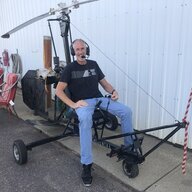


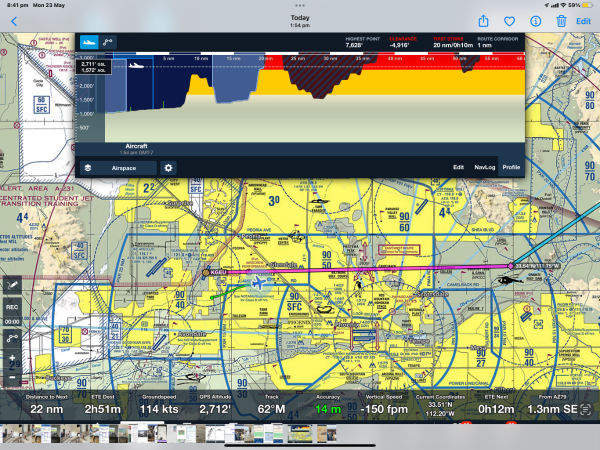




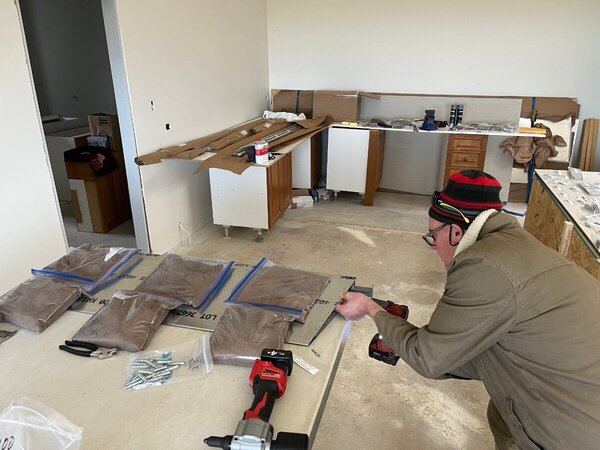
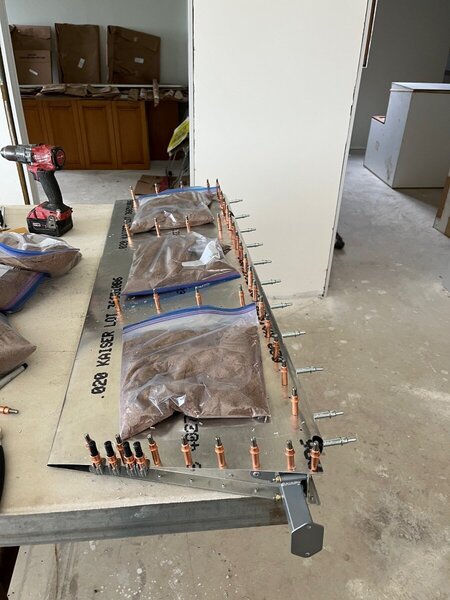
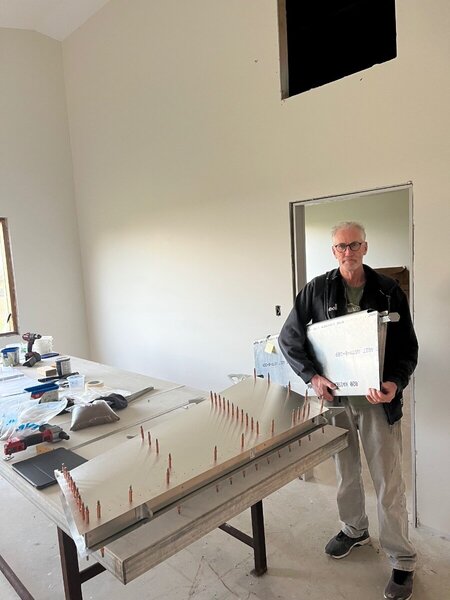
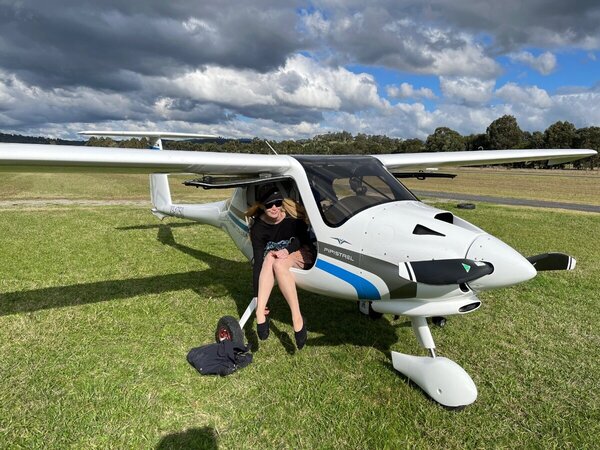
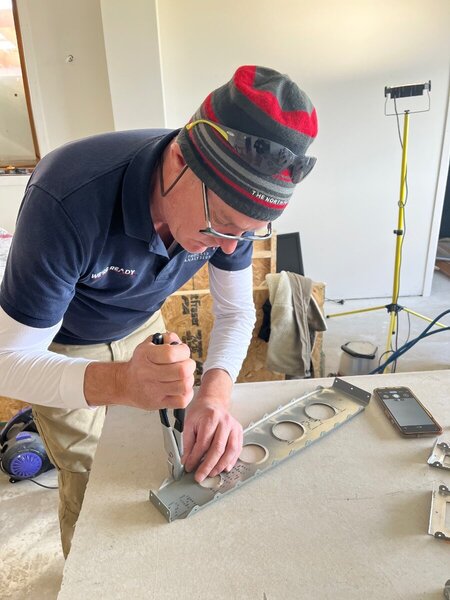
























MicroAir Radio Transceivers - JUNK and Zero Support
in Instruments, Radios and Electronics
Posted
I’m currently in USA googling Microair to try to understand the intermittent communication problems I’m having. Last was leaving a towered airport and really caused me great stress. Nearly wandered into B airspace.
So, I’m googling randomly and return back to Australia to rec flier with a definitive solution…… I’ll Throw out the microair radio!